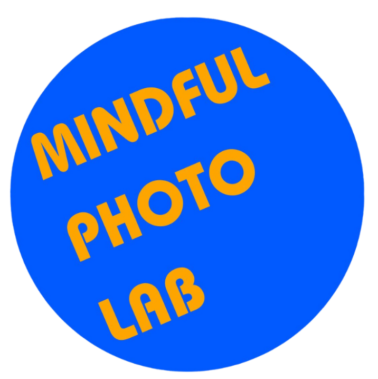Introduction to Documentary Photography is a series of workshops that will enable you to start a new project, complete something you already started or experiment with different topics.
This workshop is part of Stories We Tell funded by Arts Council England and in collaboration with St. Margaret’s House, Albrighton Community Center and Poplar Union.
At the end of the project we will have an exhibition, the publication of a photo-zine and postcards.
What subject interests you most?
Last year, I started Momentography, a project that documents local people in Tower Hamlets sharing an activity that makes them feel good.
This project enables me to connect with my community which improves my wellbeing.
Short History of Documentary Photography
Until the mid-twentieth century, documentary photography was an important way of witnessing world events: from shoot-from-the-hip photographs of the Spanish Civil War by Robert Capa to the thoughtful portraits of poor farmers by Dorothea Lange.
Social Documentary Photography
During this time artists began to see the camera as a tool for social change, using it raise awareness on injustice and inequality.
Lisette Model’s close-up views of people on the streets of Paris, New York and the French Riviera were often taken without the subjects’ awareness or permission. Her aim was to show life as it is.
From 1949 onwards, Robert Frank started to take pictures which reflected his search for artistic freedom, shooting stories which revolutionised the expressive potential of photography.
Can you access a world that others can't?
We all have access to a world that others can’t. For my friends and family living in France the Jubilee celebration was something very unusual. We don’t have royals in France and no one would wear jackets with the french flag. As a result they loved the pictures I took during my local street party last summer.
This combined to your unique perspective is a great combination for an interesting project.
The Americans by Robert Franck
Published in France in 1958, The Americans by the Swiss-born Robert Frank revolutionised documentary photography and continues to inspire visual reporters across the world such as Maggie Steber.
Maggie Steber is an award-winning American documentary photographer and National Geographic contributor. Her book Dancing On Fire is the culmination of 30 years of work in Haiti.
“As a young photographer starting out, as with so many others, The Americans by Robert Frank was my bible, my how-to book and my main inspiration as a documentary photographer. From Robert Frank’s work I learned how to visualize things without being so obvious, especially things about which we should be skeptical. I learned that the simplest photograph might carry the greatest meaning.
Some images broke my heart with their sadness that avoided sentimentality. Some images taught me about things I didn’t know about. When school taught me I had to be objective, Robert Frank’s work taught me that I should be subjective and commit to something. It wasn’t just about photography by a master photographer.
It was about understanding and feeling that a photograph might, if nothing else, inform us and change us and that it was important to be committed to something that was larger than ourselves. I loved him and I pray his work will never be lost to future generations.” – Maggie Steber
Which photographer/artist/person inspires you?
“Good artists copy, great artists steal.”
Picasso
What's so special about The Americans?
The eighty-three photographs that composed The Americans were selected from more than twenty-seven thousand that Frank took during a 10,000 miles road trip across 30 states in nine months financed by his Guggenheim fellowship.
His subjective and edgy approach wasn’t well-received by his peers at a time where photography was “generally understood to be wholesome, simplistic, and patently transparent.”
His photographs revealed a country dominated by racism, mass consumerism, and economically divided which was not of everyone’s taste.
Starting a Project: What do You Need the Most at the Moment?
I started my project Momentography a few months after the birth of my daughter. At the time I needed to reconnect with my passion of photography and change my routine.
My project was an opportunity to meet nice people, have a coffee with them, and take pictures.
You can think about photography or art in general as a way to find creative solutions to your current issues.
How Robert Frank Prepared his Road Trip
Before preparing ourselves for our documentary photography project let’s have a look at Frank’s rough itinerary and see what we can learn from it.
- Gathered maps and itineraries from the American Automobile Association
- Collected letters of reference from the Guggenheim Foundation and friends in the press (in-case people questioned his photographing intentions)
- Introductions to representatives to industries around the country (to capture a wide variety of images)
- Suggestions from fellow photographers of places to visit
- Walker Evans: The South
- Ben Schultz and Todd Walker: Los Angeles
- Wayne Miller: San Francisco
Symbols
He also made a list of symbols he wanted to capture:
- Flags
- Cowboys
- Rich Socialites
- Juke-boxes
- Politicians
Your Photo Documentary Project
As we have seen documentary photography is about exploring themes we are passionate about.
Assignment: What Matters to You?
For our first week assignment, you are going to share with us what matters to you which will help you find your subject.
Take a series of pictures and share your three favourites on our WhatsApp group along with a caption/short text to give context to your images.
- Think about what matters the most to you.
- Don’t worry if someone else has the same theme.
- How can you translate your theme into photographs? Sometime the simplest image works best.
- What objects, symbols are you drawn to (think about Frank’s list of symbols)?












